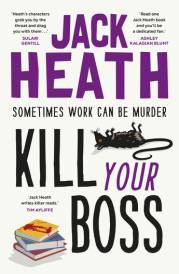Chloë Grace Moretz Greta
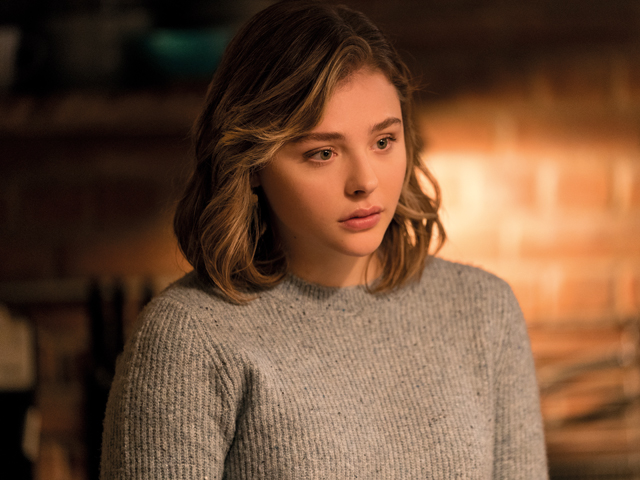
Everyone Needs A Friend
Cast: Maika Monroe, Isabelle Huppert, Chloë Grace Moretz, Stephen Rea, Colm Feore
Director: Neil Jordan
Genre: Drama, Thriller
Running Time: 98 minutes
Synopsis: Greta is a contemporary psychological thriller from Academy Award winner Neil Jordan (The Crying Game). After discovering a handbag on a New York subway train, Frances McCullen (Chloë Grace Moretz), a young woman bereaved by her mother's death, sets about returning it to its rightful owner. Frances subsequently strikes up an unusual friendship with enigmatic widow Greta Hideg (Isabelle Huppert), much to the dismay of her best friend Erica Penn (Maika Monroe) who is helping Frances acclimate to the city. Frances ignores her friend's concerns, but Greta's motives may be more sinister than they initially seem.
Greta
Release Date: February 28th, 2019
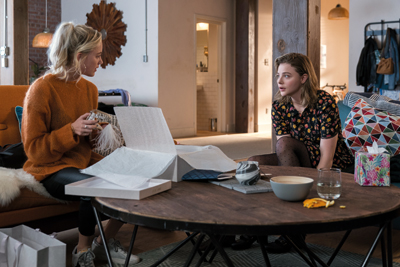 The Screenplay
The Screenplay
Neil Jordan was hooked immediately upon reading the screenplay of The Widow, written by Ray Wright, who had previously re-worked George A. Romero's classic The Crazies. The story had the qualities of a stylish Hollywood thriller for which Jordan is known, and thus inspired, Jordan began work reshaping the screenplay into what eventually became their collaboration Greta.
"There was something intriguing about it because it was almost entirely amongst three women," recalls Jordan. "It's the story of the relationship between a younger woman who has lost her mother and an older woman she befriends. It was written in that spare Hollywood style. I began to work with Ray and the script, adding different elements to it. I began to write my own drafts and it became more intriguing as it went on."
Greta tells the story of Frances McCullen (Chloë Grace Moretz), a young woman struggling to fit into New York life. She has a job as a waitress in an upscale Manhattan restaurant, misses her deceased mother, and feels estranged from her newly married father. Her only true friend is Erica Penn (Maika Monroe), a boisterous 20-something from a wealthy family with whom she shares an apartment.
When Frances discovers a missing handbag on the New York subway, she forms a friendship with its owner, an older woman by the name of Greta Hideg (Isabelle Huppert). They make a close connection, which causes Erica some concern since she feels that her friend has abandoned her.
"The film at its core deals with loss, grief, and loneliness," explains James Flynn, the producer who optioned the script in September 2016. "It's about a young contemporary woman, who is modern and forward-looking, and an older woman who is trapped in time."
Seamus McGarvey, cinematographer, continues: "It has all these things which make you think, 'what a sweet story it's going to be.' Then, gradually, the unsettling tributaries of unease arrive. It's done very subtly. These little harbingers of doom start appearing."
Jordan saw Greta as a story about obsession. Every friendship begins with a promise of sorts, he believes: "'I'll be your friend if you'll be mine. We'll share things. I'll tell you about my life, if you tell me about yours.' If those little gestures are used in a malevolent way it becomes kind of terrifying. There was something at the base of the story which was familiar to a lot of relationships. You could touch on a lot of different aspects. That's what good thrillers are often about. There's often a very simple spine that you can layer and turn into an interesting movie."
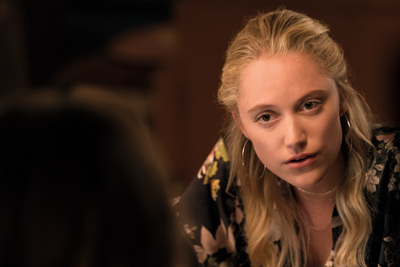 Traditionally, such narratives are normally between a man and a woman. "It's a story about possession: an almost romantic obsession that refuses to let go. The fact that the obsessional and rather perverse elements of the story are motivated by a woman appealed to me. The fact that no males played a significant part in the story was intriguing."
Traditionally, such narratives are normally between a man and a woman. "It's a story about possession: an almost romantic obsession that refuses to let go. The fact that the obsessional and rather perverse elements of the story are motivated by a woman appealed to me. The fact that no males played a significant part in the story was intriguing."
Isabelle Huppert, who was nominated for an Academy Award and won a Golden Globe for her performance in the 2016 movie Elle, interpreted the script as an ambiguous love story.
"Greta is attracted to Frances for her beauty, her youth, her innocence," said Huppert. "You can read it as a mother-daughter relationship, which fits the situation of Chloë Grace's character. Frances is perfect prey because she seeks a mother figure at this moment of her life. But it's not only a mother-daughter relationship - it's something more strange. In this film, it was important to leave a feeling of ambiguity. Something you can never really nail precisely. Is it love, attraction, a mother-daughter relationship? Nothing is defined."
Chloë Grace Moretz also read the story as a strange romantic thriller: "It's not a sexual thriller, but there are provocative moments. I think the relationship between Greta and Francis is obsessive."
The filmmakers drew inspiration from masters of suspense such as Alfred Hitchcock. Simultaneously, Greta is a contemporary thriller in the vein of films such as Fatal Attraction and Misery, with various twists and turns that the audience might not see coming.
"One of the reasons I love making movies is to make people feel something," says Maika Monroe, who plays Frances's friend and roommate, Erica. "I feel this movie hits all the different parts of film-making that I love. Thrillers are such fun. I think we're going to get people on the edge of their seats with this film."
Greta dishes up moments of horror, continues Moretz: "I think it's going to be scary. I hope people find the tangible performances in it. Each woman's performance is really important. It's not cheesy or heightened. It's realistic, naturalistic. You get taken on a ride, which you don't expect to happen."
She laughs: "You get sucker punched, when you just went in for a hug."
 Development and Casting
Development and Casting
Producer James Flynn has had a long working relationship with Neil Jordan; they previously collaborated on the film Ondine and three seasons of The Borgias. From the outset Flynn formed a collaboration with producer Lawrence Bender, known for his many collaborations with Quentin Tarantino, from Pulp Fiction to Inglorious Basterds to Kill Bill.
Bender was smitten by the story, which he describes as a unique take on a thriller: "I'm always interested in material with really good characters. I really liked the characters in this, in addition to the genre itself. One of the things I liked about this project was that the "bad guy" was a woman. It's not that original to have a woman in jeopardy. But to have all the main characters in a thriller as women adds to the style of the movie. It elevates the genre. I like genre movies when they are more elevated."
Bender's focus was to get the script to the right talent. From the beginning, Jordan wanted Isabelle Huppert to play the duplicitous Greta Hideg.
"Greta is a difficult character to cast because you want someone who shows a faded glory, someone who is still a very attractive older woman," says Flynn. "It's a delicate and challenging part to cast. You also need someone who has a commercial value who can help get the film made. Isabelle hit both criteria in that she has more awards than most other actresses in the world, but she has also crossed into the mainstream at the Golden Globes and Academy Awards. She was an inspired bit of casting, I believe."
Neil Jordan: "Isabelle Huppert said she was interested in playing the role, which was very brave and bold of her. It's the kind of role that might intimidate many actors. She wanted to embrace it wholeheartedly. So I said, 'Great, let's go for this'."
Huppert relished the role. "This character is not one-dimensional," she says. "Greta has several dimensions, which is very attractive as an actress. I wanted to create a character who has a mystery to her past. She has many sides. It's allowed me to navigate between several sides of the character. That attracted me to the role, alongside the opportunity to work with Neil Jordan. When I choose to do a film, I can never disassociate the script from the director. I was happy Neil was going to direct, so that motivated my decision too."
The creative team also faced a challenge in casting Frances McCullen, the story's protagonist. They wanted a young actor who could convey vulnerability and bring star appeal. An actor in her late twenties would be too old to play someone recently graduated from college and landing her first waitressing job in New York. But there are few actors in their early twenties who have transitioned from child stardom to adult leads. One name stood out.
Chloë Grace Moretz, an accomplished child actress who successfully crossed over into more adult roles in recent years, was perfect casting. Moretz, 20, is not only a highly accomplished actress – she is a movie star in her own right.
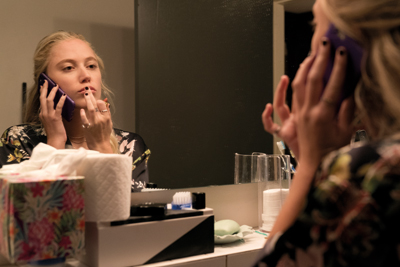 "As an actor, you read so many different stories and characters and roles that you might want to play," says Moretz. "When I read this script, it struck me with the excitement of a movie I hadn't seen in many years. It feels like the type of films that were made in the 1980s and 1990s that don't get made any more: a smart thriller that has real acting and real moments, encompassed in a thrilling, scary experience. It had the perfect storm of Isabelle Huppert and Neil Jordan attached to it already, so I was excited to get involved."
"As an actor, you read so many different stories and characters and roles that you might want to play," says Moretz. "When I read this script, it struck me with the excitement of a movie I hadn't seen in many years. It feels like the type of films that were made in the 1980s and 1990s that don't get made any more: a smart thriller that has real acting and real moments, encompassed in a thrilling, scary experience. It had the perfect storm of Isabelle Huppert and Neil Jordan attached to it already, so I was excited to get involved."
Jina Jay (Rogue One, The Grand Budapest Hotel, Tinker Tailor Soldier Spy), casting director for Greta, brought the actress Maika Monroe to the attention of the team. The lead in 2014's breakout indie horror hit It Follows, Monroe is a star in the making.
Lawrence Bender met Monroe during the early stages of casting for Greta. "I thought she was fantastic. Neil loved her too," says the producer.
James Flynn added: "We were aware of Maika from a number of fine independent feature films. She plays Erica Penn: a vibrant, outspoken character. Now I can't read the script without seeing her in the part."
According to Monroe, Greta "is one of those scripts that you can't put down. You have to finish it. There are so many twists and turns. Plus, I can't say the last time I read a script in which there are three female leads, it's so cool. "
Having three female lead characters brings a different dynamic to the thriller template, agrees Jordan: "I was lucky to get these three great actors to carry out these roles and it has been thrilling working with them. You don't have to deal with male issues at all. It's incredible. Even when they are punishing each other, they are having fun. I just love it."
Moretz: "For Neil to take on a project like this is very cool. Very forward of him. It's something we need in cinema currently. It's something that drew me to the project in the beginning. It's just a bunch of women! You don't see it a lot in these types of movies."
As casting progressed, John Penotti, a veteran producer and president of Sidney Kimmel Entertainment (Hell or High Water, Brad's Status), committed to come on board the project in Cannes 2017.
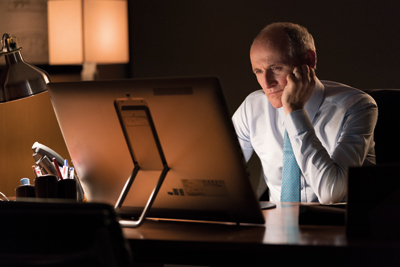 "Being a New Yorker, I was taken by the setting," says Penotti. "New Yorkers who live in such tight quarters, amidst such dense humanity, might imagine that strange things happen behind closed doors. That environment was very provocative to me. I liked the idea that no one is ever what they might seem. I could completely imagine Greta's character as someone I have walked past many times on the streets of New York City. The idea that she has such a complicated past and a twisted way to deal with her loneliness, was compelling to me."
"Being a New Yorker, I was taken by the setting," says Penotti. "New Yorkers who live in such tight quarters, amidst such dense humanity, might imagine that strange things happen behind closed doors. That environment was very provocative to me. I liked the idea that no one is ever what they might seem. I could completely imagine Greta's character as someone I have walked past many times on the streets of New York City. The idea that she has such a complicated past and a twisted way to deal with her loneliness, was compelling to me."
Neil Jordan's working methods around scripting and casting also gave Penotti encouragement. Penotti describes the creative process between the producers and writer-director as productive and enjoyable. "Not surprisingly, someone who is just a great storyteller is also a great listener. I've been a fan of everything Neil has ever done. The most heartening and satisfying part of the process was the fact that Neil was open and willing to listen and collaborate. At the end of the day, though, he was very strong in his singular vision for this film."
SKE's involvement accelerated the project towards production. The producers also secured the backing of Screen Ireland (formerly the Irish Film Board) and utilized local tax incentives in both Ireland and Canada. Filming began in September 2017.
An Irish Affair
The creative team opted to shoot the film in Ireland, as well as Toronto and New York. James Flynn has co-produced with Canada for many years and Lawrence Bender, who made the bulk of Boston-set Good Will Hunting in Toronto, knew they could pull it off.
"Like every production, this film had its challenges," explains Penotti. "In this instance, it was never about the core direction of the story. If anything, it was about the logistical challenges of building a modern-day version of New York City, that was unique in its presentation, in Dublin. That was something we all worked very hard on."
Neil Jordan and the producers achieved this illusion by all-Irish heads of department that rank amongst best in the world, including twice Academy Award-nominated director of photography Seamus McGarvey (The Hours, Godzilla, Life).
McGarvey normally chews over each page of a script, imagining shots as he goes along. However, he read the screenplay for Greta like a novel. "It had such impetus and dynamism. I was on the edge of my seat reading it. It was one of the few scripts I read in one sitting. I love this genre: a thriller that is so well written."
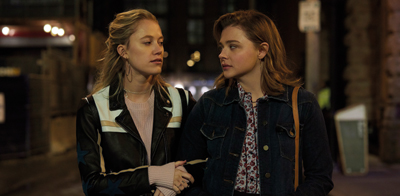 Since dressing Daniel Day Lewis in 1989's Academy Award winning My Left Foot, Joan Bergin has become a highly regarded costume designer. Her work includes big screen dramas such as The Prestige and global television spectacles such as The Tudors and Vikings. Bergin, an Emmy Award winner, thought Greta was one of the most intelligent screenplays she had read in some time.
Since dressing Daniel Day Lewis in 1989's Academy Award winning My Left Foot, Joan Bergin has become a highly regarded costume designer. Her work includes big screen dramas such as The Prestige and global television spectacles such as The Tudors and Vikings. Bergin, an Emmy Award winner, thought Greta was one of the most intelligent screenplays she had read in some time.
"The psychology of the script attracted me to this story. When I read it the first time, I closed it half way through and said 'wow'. Clothes can tell so much about people. Every single costume should help the director tell his story."
Production designer Anna Rackard had collaborated with Neil Jordan on films such as The Butcher Boy (1997) and Ondine (2009), so she was immediately tuned in to the director's approach and style.
"Apart from having a particular eye for a location, and a vision for how a film should look, Anna is economically responsible," said producer James Flynn. "A lot of directors and designers get uncomfortable if they're not filming where the story is based. She sees beyond that. She isn't worried by the challenge of creating New York interiors in Dublin."
The film-makers and the crew amounted to what John Penotti describes as a "dream team."
Chloë Grace Moretz agrees: "I've worked for 15 years now and this team is by far one of the best teams I've had on a set, alongside my projects with people like Martin Scorsese. On a smaller movie like this, you don't expect this amount of talent to come through."
Two weeks before filming started, Monroe and Moretz met in Dublin to begin script read-throughs with Neil Jordan. "We did rehearsals every day, breaking down every scene, first just Maika and me," recalls Moretz. Monroe continues: "Chloë and I worked a couple of hours every day with Neil. Then we brought Isabelle in. We all went through the script from beginning to end, working everything out together. As different actors came in for the different roles, we made it bigger. A couple of days before production, we did a table read with everyone. It was really nice to have that time to go through the script and make sure everyone is on the same page. I've done my fair share of indies and you definitely don't always get that preparation time. I don't take it for granted. It's been really helpful."
This pre-production period helped Moretz and Huppert build their ultimate rapport.
"There is a real connection between the two of us," says Huppert. "I feel like we are from the same family. We have the same kind of approach to the work. There is a mirror effect between us, which is telling for the story. There's a chemistry between us."
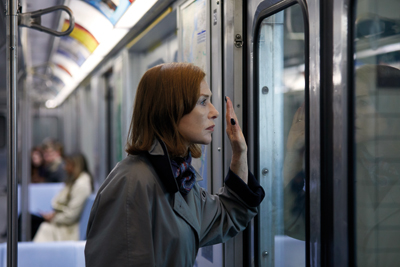 Designing Greta
Designing Greta
Two months before shooting commenced, Anna Rackard visited Toronto to search for exterior locations. Joan Bergin researched contemporary New York fashion and presented Neil Jordan with mood boards, outlining design ideas for each character. Seamus McGarvey and Jordan discussed the script and planned the film's visual tapestry.
"We ironed out any technical difficulties," says the cinematographer. "I talked with Anna and Joan as well to make sure we were all on the same page in terms of the tone and the colour of the film."
The bulk of the interior design in the film took place at Ardmore Studios, just outside Dublin in Ireland. Rackard's team set about building two large apartments on a 25,000 square foot sound stage: a contemporary New York loft, where Frances and Erica reside, and an older, more traditional building, where Greta lives.
"Even if we were filming in New York, we would have to film a lot of the scenes inside an apartment," says producer James Flynn. "So it's no difference to us creatively filming the interiors in Dublin or New York."
Ardmore Studios provided a convenient base for Neil Jordan, who lives nearby.
"I can drive from home to this beautiful studio," says Jordan. "I shot in this studio years ago, before I did The Crying Game [1992]. Nobody had used it for years. There was a colony of bats living in the screening rooms! Now it's alive and busy, mainly through television productions and independent movies. It has a special place in my heart. I'm so glad to be able to do the interiors here."
The studios gave Isabelle Huppert a similar sense of intimacy: "I love being in Dublin and working here at Ardmore Studios. There was a nice feeling of intimacy, which was welcome for this film. You don't want a film like this to be overwhelmed by too many exterior elements, so we are immersed in the making of the story."
Creating the women's apartments in a studio location suited Jordan. During the pre-production process, he studied a number of city films with Seamus McGarvey. "Neil wants to portray New York in an oblique way," says the cinematographer. "Not shooting in the real place will enhance the psychological aspect of the story. You're not going to be concerned about the verisimilitude of the city. We're told it's New York, but what's really important is these characters and what is in their heads."
Anna Rackard set out to design a modern Tribeca loft for the wealthy Erica Penn. The production designer explains: "The contents have to be young and trendy, but not too arty. There's a slightly eclectic mix of furniture in there. Brick walls. White. I wanted to keep it colourful and light in its tone."
Greta Hideg's carriage house, on the other hand, was built to appear more mysterious. "I wanted it to be somewhere that Frances initially finds intriguing. On one hand, it is a very attractive place: there are a lot of interesting things to look at. But that can become creepy and oppressive. While Erica's apartment is open and airy, there's a lot of layering in Greta's."
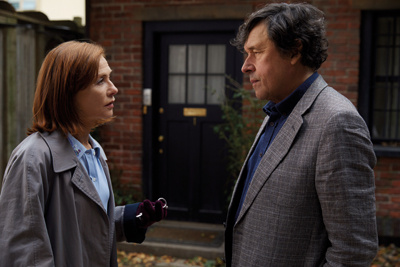 Joan Bergin took a similar approach when designing Greta's costume, bringing out the duality of the character through her clothing. In the script, she is described as follows: "Once beautiful, she has retained her elegance and the pearl earrings that belonged to a grandmother."
Joan Bergin took a similar approach when designing Greta's costume, bringing out the duality of the character through her clothing. In the script, she is described as follows: "Once beautiful, she has retained her elegance and the pearl earrings that belonged to a grandmother."
Bergin explains: "Greta presents herself in a way émigrés often do: people who almost assume another identity. The psychology of Greta is one of the reasons I was drawn to the project. I have a duty of care to her, in that I want to share her duplicity through costume."
Chloë Grace Moretz's costumes also fed into the character of Frances: "Joan is the best. She's so smart with the costumes. A month before I went to Dublin, we discussed our ideas for the character over email. We wanted to play with the colours in the wardrobe. Frances starts off with a lot of greys and dark greens. As she sparks up her relationship with Greta, her colours become more vibrant."
"What I see when I'm there in the middle of the set is extremely promising," says Isabelle Huppert. "It's a wonderful feeling when you know the costumes carry the story. I like this idea that the film finds its own organic life. That's thanks to the set, the design, the costumes. Everything is there to make the story strong."
The Production
Alongside their time in Ardmore Studios, a week was spent filming in a plush fine-dining restaurant which, conveniently for the production, was temporarily available during a refurbishment, the setting for Frances McCullen's waitressing job. New York cabs buzzed past the window. Scenes were shot elsewhere around Dublin, including the city's St. Stephen's Green, which doubled for Brooklyn's Prospect Park.
Neil Jordan, as director, was relieved to be back making a feature after five years in television. "I did The Borgias, which was a wonderful experience. While directing for television can be a punishing task, as the schedules are relentless, there's something unique about making a movie that people will see in the cinema. It's a different animal entirely."
Oscar nominee Stephen Rea, who plays detective Brian Cody in Greta, is best placed to talk about Jordan's artistry. This is his eleventh film with the director. "I was in his first movie, Angel," says Rea. "I did Company of Wolves. Then there was The Crying Game and Michael Collins. These are all wonderful and significant movies in a way. I find working with Neil exhilarating and pleasurable. We have known each other very well over the course of 35 years. The crew love Neil. He's very demanding. But he's the real thing."
Jordan describes his creative process as adapting to the moment. "Seamus McGarvey, Anna Rackard, Joan Bergin, the actors, the camera crew, everybody on the team, has certain hopes in mind at the start of the shoot. You don't know if you can achieve them or not. Everybody has a different understanding of the story but slowly it unfolds, like peeling an onion."
At the start of every day during the production, Jordan walked through scenes with the actors: a private rehearsal process that Chloë Grace Moretz enjoyed immensely.
"We run through everything," she says. "If we have an issue we hadn't thought about until now, we are allowed to bring it up. To some producers, that would be an arduous experience because it prolongs your day, but for the actors, director, and cinematographer, it allows everyone to figure out what they are doing in that moment. Figure out the point of the scene, and make the most of each moment we have on screen instead of filming miscellaneous things that make no sense when we get to the editing room."
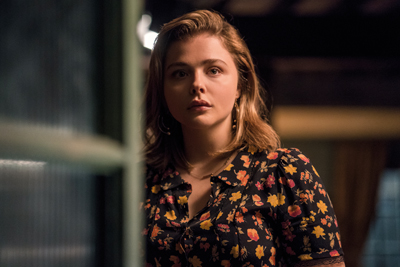 Isabelle Huppert also enjoyed the freedom that Jordan gives his cast: "Neil Jordan is a wonderful director. That was no surprise to me. I've seen almost all of his films. I love the way he works: he lets things happen. He likes the actors to find their own movements. He likes us to inhabit our roles, occupy the space, and find our own rhythms. I find that very freeing."
Isabelle Huppert also enjoyed the freedom that Jordan gives his cast: "Neil Jordan is a wonderful director. That was no surprise to me. I've seen almost all of his films. I love the way he works: he lets things happen. He likes the actors to find their own movements. He likes us to inhabit our roles, occupy the space, and find our own rhythms. I find that very freeing."
Production designer Anna Rackard describes Jordan as the sharpest director she has ever worked with. "But he's not critical or picky. He will take it all in. He's not a procrastinator. That makes it easier because you have to work quite fast. He's very trusting."
Seamus McGarvey says Jordan inspires a sense of problem solving and camaraderie. "Neil is such a master at Rubik's Cubing his way out of situations and making them creatively better," says the cinematographer. "I've loved witnessing a master filmmaker at work when we have to solve a problem. I really feel we've all done that together. I have one of the best camera crews I have ever had. Focus pullers, grips: everyone here has been wonderful. We all feel part of the film and that we are making something quite special."
McGarvey works much the same way as Jordan: not proceeding with a rigid rulebook, but adapting to challenges and opportunities. "Early on, because of the psychological nature of the story, I was leaning towards shooting the film on anamorphic lenses," he says. "I wanted a shallow depth of field. We wanted to give it, in the midst of this naturalism, some sense of scope: a sense this was epic on a psychological scale."
When he initially read the script, McGarvey had not anticipated using handheld cameras, but during production he opted to use the technique for a number of particular moments in the film.
"I love it because it allows the actors a lot of freedom. We're working with such great actors as Isabelle Huppert and Chloë Grace Moretz who understand the mechanics of cameras. Handheld gives them a certain levity and a sense of the true observational aspect to the story. We have used it at moments where we are trying to destabilise the audience."
Jordan describes Seamus McGarvey as one of the world's greatest cinematographers. "I've never had the opportunity to work with him before," says the writer-director. "It's been amazing. He's extraordinarily inventive, passionate. He's coming up with an extraordinary tableau of colours; light and shade. I'm finding it a thrilling experience. In a strange way, it's a constructed experience. Because we're not shooting certain elements in New York, we can almost construct an alternate reality. Seamus came up with a series of colours, variations of light and shade and composition, that belong to this film and nothing else."
Chloë Grace Moretz was impressed by McGarvey's sense of composition: "You see a complete tonal shift when you get into Greta's apartment compared to the way he lights the moments with Erica and I. Everything you see feels tangible: thick, warm, cold. It has moments of immense depth, with such sheer light and brilliance. He is a very smart mind and hands on. He's on set all day with us. He's in every rehearsal with us, with Neil figuring out the shot-list. Everything is so well thought through."
As well as being adaptable and solution-oriented, McGarvey was a personable presence on the set of Greta. The same might be said of Morton, the dog that Frances persuades Greta to bring home from the animal shelter for companionship. Isabelle Huppert describes herself as a cat person. The dog who played Morton, however, won her heart. "He was so sweet," says Huppert. "My character is really harsh with him, I'm sorry to say. But he was perfect for the film."
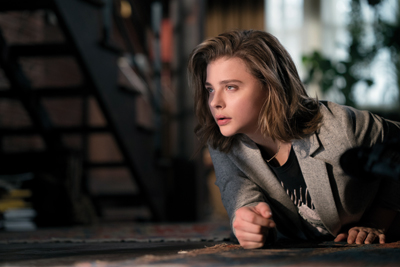 Chloë Grace Moretz and Maika Monroe, meanwhile, had companionship in each other.
Chloë Grace Moretz and Maika Monroe, meanwhile, had companionship in each other.
Alongside the story's Hitchcockian thriller aspects, Neil Jordan describes it as "a portrait of a friendship between two girls having fun and being irreverent in a contemporary city."
The on-screen rapport between Frances and Erica is full of youthful, friendly banter. "It's a thriller, but we wanted to make sure the audience isn't initially aware of that," says Moretz. "We wanted to build up the beginning like you're going to watch a romantic comedy about a girl who is living with her best friend in New York City and finds an older woman to be the maternal aspect in her life. We wanted to make those moments feel light and airy, so the plot twist, when it comes, will be even more shocking."
Moretz and Monroe are friends off screen too. They worked together on 2016's The 5th Wave, "so it was nice coming into this having spent a lot of time together and bringing a lot of natural friendship to the character chemistry," according to Monroe. "We're trouble sometimes. We have too much fun or start laughing and can't stop. Neil will come and tell us to quiet down."
In Greta, Frances McCullen is thoughtful and reserved, while Erica Penn is gregarious and outgoing. In real life, the pair are the opposite.
"Maika is usually the quieter one," says Moretz. "I'm silly and ridiculous. So it was funny for me to be serious and sober and for her to be the crazy one. Erica is a really good friend to Frances. She's the voice of the audience. When Frances is running off with Greta, making dinner and creating a relationship with her, Erica is saying, 'What the hell are you doing, dude? That is really strange of you'. I think everyone in the audience is going to be thinking that too."
Inevitably, Moretz and Isabelle Huppert also connected.
"We've gotten really close over the course of this project," admits Moretz. "She's been so gracious as an actress, so forward-thinking with the character. She's very smart about the way she unveils the thriller aspect. She delivers perfectly measured amounts of terror. She has made Greta very refined, which I didn't expect when I first read the screenplay. Greta is a very smart character, but you could almost have seen her as a helpless bag lady in the first script I read. Isabelle made it something so much more interesting... and terrifying."
Atlantic Crossing
After wrapping in Ireland, the cast and crew travelled to Toronto. The production utilized an actual subway train, shooting in an abandoned station, to film the scenes when Frances discovers Greta's handbag at the start of the story.
"We converted that train to make it look like the New York subway, then filled it with extras," explains production designer Anna Rackard. "They ran a train especially for us."
Filming on Greta finished in New York with scenes that included Frances, Chloë Grace Moretz's character, cycling across the Williamsburg Bridge.
"I've shot in New York many times and the city cries out for particular views," says Seamus McGarvey. "But Neil is more interested in askew angles of the city that aren't necessarily picture postcard views. Instead, they give a sense of the city and the undertow of the metropolis."
According to Jordan, the studio work in Ireland dictated the locations in Toronto and New York: "The fantastic environment we constructed in the Dublin studio, and the locations we used, set a tone for the film. We set a visual template for how we approach the city streets in Toronto and New York."
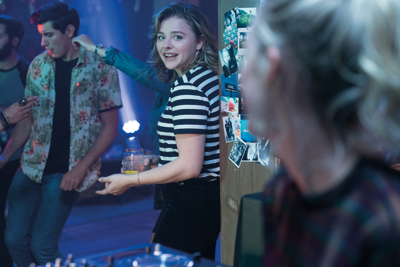 Anatomy of a Scream
Anatomy of a Scream
The story of Greta begins innocently, but it gradually takes a darker turn.
This transition provided a visual cue for the filmmakers. While the early scenes are lit warmly and brightly, with pops of sunlight, the tone becomes more obscure, darker, with more contrasts, as the narrative progresses. In one harrowing sequence, Greta stalks Erica through the streets of New York, while relaying images back to Frances via a smartphone.
This sequence required three different perspectives, explained cinematographer Seamus McGarvey. "One is this spectral, almost ghostly figure, appearing as an electronic presence. You have great fun playing with Greta's eye, which is unadorned and inquisitive, but ham-fisted in some way. It's more terrifying because of that. The camera is Steadicam, giving it a ghostly presence. That became Greta's POV.
"We have Erica with a definite sense of the hunted. Then we are with Frances in Erica's flat, viewing the technology as the images are appearing, and the frustration of that. We had great fun playing with the carousel style of photography. Chloë worked with us in camera to create this swirling sense of confusion, where the background blurs against her movement."
During post-production, editor Nick Emerson made sure the sequence hit the right beats. "The phone stalking sequence was one of the most brilliant things I ever read in a script," says Emerson. "It was so tense. I was looking forward to putting it together, but knew it was going to be complicated to pull off. It went through several iterations in the edit to get the right balance of the Hitchcockian thing of when we should reveal certain information to the audience. It was great fun to construct."
Although the film has many tenets of a traditional thriller, Neil Jordan describes this sequence as profoundly contemporary. "The use of social media to terrify people has been in many movies, but this is a unique approach." says the director. "At a certain stage, you realise this older woman is so adept at technology that it's terrifying."
Prior to production commencing, McGarvey and Jordan referenced films such as Alfred Hitchcock's Rear Window and Michael Powell's Peeping Tom. Both films explore voyeurism and the idea of how the camera violates the objectivity and subjectivity of film, essentially turning moviegoers into voyeurs.
"Hitchcock was the master of the scopophilic eye in camera," says McGarvey. "I love shooting with longer lenses or shooting through things that create a sense of either observing or being observed. It's interesting in terms of when you place a camera either as a point of view, or as a dispassionate eye."
McGarvey's fascination with the psychology of filmmaking is in accord with Jordan's work. "I've always admired Neil Jordan's films: from Angel, his first film, onwards," says the cinematographer. "They always had a magic to them. They were often set in an apparently realistic milieu, but they had a distinctive, almost otherworldly, feel. They had a psychological undertone to them but are believable in terms of the dilemmas the characters go through. This is no different. Neil knows where to put the camera for maximum effect and to tell a story in an eloquent way."
Neil Jordan adds: "Ever since I did [1984's] Company of Wolves, I've been bracketed at the more baroque end of things. I've done Interview with a Vampire, Byzantium: movies that belong at the darker end of the spectrum. This is not a horror movie; it's a thriller. But I hope it will be a really terrifying film. That has been a great challenge: to make a spectral, scary film. To introduce the audience to the darker side of their imaginations."
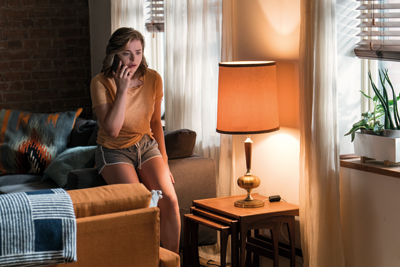 Dreams of Love
Dreams of Love
The haunting refrains of Franz Liszt's Liebesträume echo across Greta. The solo piano piece, which translates as Dreams of Love, has been used in other films such as 1950's All About Eve. In this context, however, the melody takes on a more sinister undercurrent.
"I've always wanted to terrify people with beautiful music," says Neil Jordan. "Liszt was a genius. Liebesträume has been used in many films and contexts. I wanted to create a story where an absolutely beautiful piece of music becomes so loathsome to the character who has to suffer it endlessly throughout the film, that it actually becomes a source of punishment."
Jordan brought this theme to the story during the development process, explains Isabelle Huppert, who plays Greta Hideg in Greta: "It wasn't there in the initial script. Greta often sits at the piano and plays. It brings a kind of emotion to the story: a mystery. You don't understand why she's obsessed with this music and the kind of music: Liszt, [English composer] Henry Purcell, and some others. It's a marvellous idea."
While constructing Greta's apartment set in Dublin's Ardmore Studios, production designer Anna Rackard found an old piano to put in the space. The first shot filmed on the set featured Greta playing the piano when Frances arrives at the door. Huppert, who starred in the 2001 film The Piano Teacher (for which she won the Best Actress award at the Cannes Film Festival), played all her own piano parts.
"It was helpful that she knew how to play the piano," says producer James Flynn. "She had to learn particular pieces for the film. She was a highly-accomplished piano player as a child, so she is able to adapt to pretty complex pieces."
Huppert is modest about her abilities: "I had to work a little bit, just to be at ease playing on this old piano. Liszt is the most impossible composer in the world. In the beginning, Neil talked to me about doing Liszt's composition La Campanella. Finally, we ended up with Liebesträume, which is very evocative and mysterious."
These piano pieces helped dictate how Jordan and McGarvey told the story of Greta. They played the music before certain scenes in order to get the actors in the mood.
"It encourages me to move the camera in a certain direction," says the cinematographer. "The camera and the actor coalesce. Movement becomes synthesised and blended. It's like a little dance between the choreography of the actor and the camera."
Javier Navarrete, who worked with Jordan on 2011's Byzantium, composed the score and reconstructed the classics for Greta. Navarrete, also known for his work on Guillermo del Toro's 2006 film Pan's Labyrinth (for which he received an Academy Award nomination), plays a key role in the storytelling.
"I'm working with an entire orchestra," says Navarrete. "Our woodwind section has two bass clarinets, one bass flute, and one contrabassoon. There's lots of power in the low register. Same for the brass section, which consists of two tubas and bass trombones. The high register is covered by the string section. I have electronic sounds working at the same time: impacts and sounds that combine with the orchestra."
The composer approached the score in much the same way as Pan's Labyrinth, Devil's Backbone, and Byzantium. "Some movies you approach through the characters. This is a character's movie. The classical music goes through the character of Greta. The music around Frances sounds more electronic, rhythmic and light. Other music is oriented to tell the audience what they have to feel at a particular moment."
Navarrete struck up a close collaborative partnership with Neil Jordan while crafting the music at Dublin's Windmill Lane Recording Studios. "He is a very musical director. He plays classical guitar, piano, and sings. At the same time, he gives me lots of space to be creative."
James Flynn adds: "We're also working with a music consultant who will help us with the various other pieces for the soundtrack, sourcing Chopin pieces and some wonderful other classical and contemporary music."
Aftermath
Post-production was undertaken in Dublin's Windmill Lane Pictures, under the guidance of editor Nick Emerson (Lady Macbeth, The Crow Reborn).
"Nick has an encyclopaedic knowledge of films apart from being a very experienced editor, so he's a breath of fresh air to this whole process," says Flynn. "Nick is turning things on their head. He's a new energy for us all."
When Emerson read the screenplay, it reminded him of thrillers he loved when growing up during the 1990s, such as The Hand That Rocks The Cradle, Single White Female, and Misery.
"The editor can bring many things to this sort of genre of film. Especially in thrillers, it's all about the delivery of information, in terms of which point you decide to let the audience in on certain secrets of the story or the character, or little bits of information. Hitchcock was the master of that. Is it better the audience is aware something is about to happen? Is it better they don't know what's about to happen? It's about choice, presenting those choices, and having an instinct for how the sequence might be best told."
The result, reckons the editor, will be scary, thrilling and emotional: "I hope audiences will be surprised by what they see up on the screen."
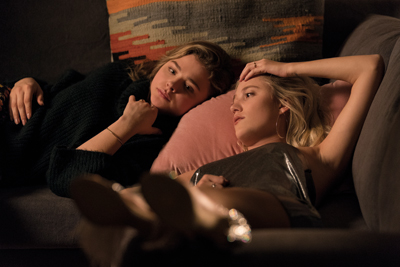 The Characters
The Characters
Isabelle Huppert on Greta Hideg
"In the first part of the story, Greta is a very nice person. Very fragile. I would not say she is weak, but you see her as a particularly shy person who is very demanding. Her qualities, we presume, include tenderness and love. She keeps saying she feels lonely. In fact, she probably is. It's probably out of loneliness that she does what she does. What was interesting about the role is she is several people.
What is hidden behind those eyes? She's a very normal person. She's very good at that. As the story continues, she is more versatile and presents many faces.
Frances McCullen's kindness, naivety, and her beauty, appeals to her. At some point, it's like a love story. She has a real attraction to Frances, who is almost like an angel to her. Her innocence appeals to her. As we come to realise, something from her past makes us understand why she is attracted to Frances.
I don't think you will look at Greta with sympathy. She is obsessed with a lost world: a universal aspect to this movie. You understand she carries this melancholy feeling of something missing that will never come back. It's the sense of time passing."
Chloë Grace Moretz on Frances McCullen
"Frances McCullen is a sober kind of girl. Her mother passed away a year ago. I wouldn't want to say she's naive, but she is emotionally raw. When your emotions are beaten down and you are an open book, you can become prey. She's just really open and wants a mother: a maternal aspect in her life. That opens the door for Isabelle's character Greta to come in.
If your mother dies, then you are dealing with an automatic sense of sadness, an overwhelming sense of despair, which is looming over everything in your being.
She has been through the traumatic experience of losing her mother, which has created a tumultuous relationship with her father. She has been relying on her best friend Erica.
I wanted those emotions to be present. It's not every second, all day, it's moments and flashes. It's when you hear something, or touch something, that you get that flush of memory. I don't think Frances is aware she is gaining a maternal experience from Greta. She doesn't understand why she connects so closely to this woman. Greta, on the other hand, preys on the naive, sensitive aspects of Frances in a twisted way."
Maika Monroe on Erica Penn
"Erica is a very fun character. She grew up in New York from a very wealthy family. Her dad bought her this beautiful apartment where she lives with Frances. One of my favorite things about Erica is she has a real sense of herself. She isn't afraid to tell people how she really feels. She's a tough, no-bullshit type.
Erica and Frances are very different, but I think that's why they work well together. Frances is very internal, whereas Erica is dramatic and wants to be the centre of attention.
When she first hears about Greta, she thinks Frances is insane for wanting to hang out with this old lady. I think there's also a tiny bit of jealousy. She wants her friend to hang out with her. As Greta and Frances' relationship develops, and they spend a lot of time together, Erica starts to worry that it's becoming unhealthy. As it transpires, Erica may be right. She senses that something is wrong from the beginning.
I'll definitely remember Erica for a long time. She's very different to anyone I've played in the past and very different from me, which is always so fun to play."
Release Date: February 28th, 2019
MORE



